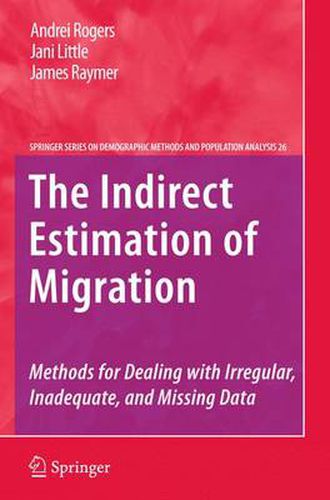Readings Newsletter
Become a Readings Member to make your shopping experience even easier.
Sign in or sign up for free!
You’re not far away from qualifying for FREE standard shipping within Australia
You’ve qualified for FREE standard shipping within Australia
The cart is loading…






This title is printed to order. This book may have been self-published. If so, we cannot guarantee the quality of the content. In the main most books will have gone through the editing process however some may not. We therefore suggest that you be aware of this before ordering this book. If in doubt check either the author or publisher’s details as we are unable to accept any returns unless they are faulty. Please contact us if you have any questions.
This book presents the culmination of our collaborative research, going back over 15 years (Rogers & Little, 1994), and for one of us, even longer (Rogers, 1967, 1973). It addresses a dif?cult, yet necessary, area of demographic research: what to do in data situations characterized by irregular, inadequate, or missing data. A common solution within the demographic community has been what is generally referred to as indirect estimation . In our work the focus has been on the indirect estimation of migration, and our use of the term indirect follows the description given in the 1983 United Nations manual, which de?ned it as techniques suited for analysis of incomplete or defective demographic data (United Nations, 1983, p. 1). We wrote this book with a goal to make it accessible to a reader familiar with introductory statistical modeling, at the level of regression and categorical data an- ysis using log - linear models. It is primarily intended to serve as a reference work for demographers, sociologists, geographers, economists, and regional planners.
$9.00 standard shipping within Australia
FREE standard shipping within Australia for orders over $100.00
Express & International shipping calculated at checkout
This title is printed to order. This book may have been self-published. If so, we cannot guarantee the quality of the content. In the main most books will have gone through the editing process however some may not. We therefore suggest that you be aware of this before ordering this book. If in doubt check either the author or publisher’s details as we are unable to accept any returns unless they are faulty. Please contact us if you have any questions.
This book presents the culmination of our collaborative research, going back over 15 years (Rogers & Little, 1994), and for one of us, even longer (Rogers, 1967, 1973). It addresses a dif?cult, yet necessary, area of demographic research: what to do in data situations characterized by irregular, inadequate, or missing data. A common solution within the demographic community has been what is generally referred to as indirect estimation . In our work the focus has been on the indirect estimation of migration, and our use of the term indirect follows the description given in the 1983 United Nations manual, which de?ned it as techniques suited for analysis of incomplete or defective demographic data (United Nations, 1983, p. 1). We wrote this book with a goal to make it accessible to a reader familiar with introductory statistical modeling, at the level of regression and categorical data an- ysis using log - linear models. It is primarily intended to serve as a reference work for demographers, sociologists, geographers, economists, and regional planners.